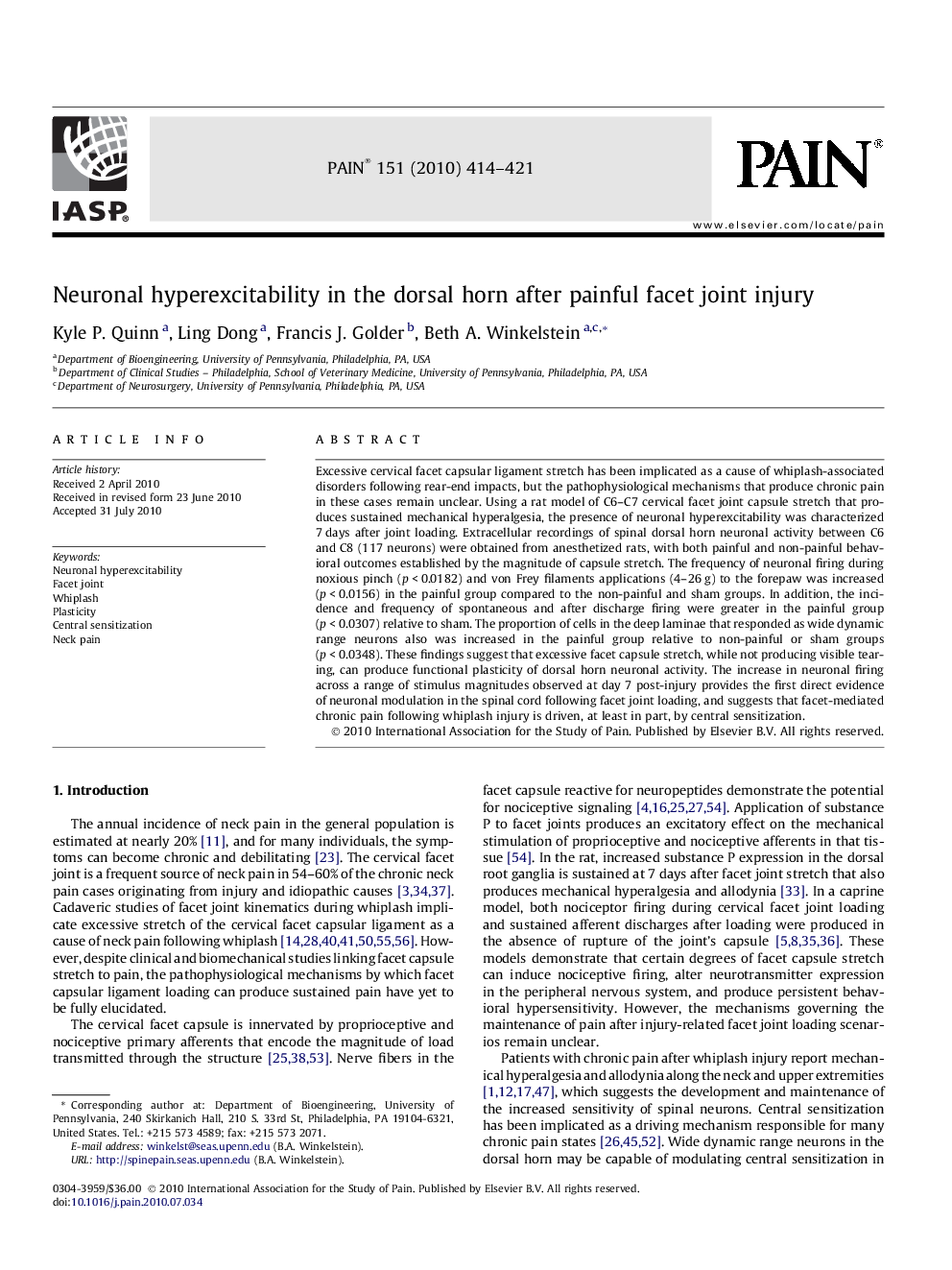| کد مقاله | کد نشریه | سال انتشار | مقاله انگلیسی | نسخه تمام متن |
|---|---|---|---|---|
| 10451226 | 918392 | 2010 | 8 صفحه PDF | دانلود رایگان |
عنوان انگلیسی مقاله ISI
Neuronal hyperexcitability in the dorsal horn after painful facet joint injury
دانلود مقاله + سفارش ترجمه
دانلود مقاله ISI انگلیسی
رایگان برای ایرانیان
کلمات کلیدی
موضوعات مرتبط
علوم زیستی و بیوفناوری
علم عصب شناسی
علوم اعصاب سلولی و مولکولی
پیش نمایش صفحه اول مقاله

چکیده انگلیسی
Excessive cervical facet capsular ligament stretch has been implicated as a cause of whiplash-associated disorders following rear-end impacts, but the pathophysiological mechanisms that produce chronic pain in these cases remain unclear. Using a rat model of C6-C7 cervical facet joint capsule stretch that produces sustained mechanical hyperalgesia, the presence of neuronal hyperexcitability was characterized 7 days after joint loading. Extracellular recordings of spinal dorsal horn neuronal activity between C6 and C8 (117 neurons) were obtained from anesthetized rats, with both painful and non-painful behavioral outcomes established by the magnitude of capsule stretch. The frequency of neuronal firing during noxious pinch (p < 0.0182) and von Frey filaments applications (4-26 g) to the forepaw was increased (p < 0.0156) in the painful group compared to the non-painful and sham groups. In addition, the incidence and frequency of spontaneous and after discharge firing were greater in the painful group (p < 0.0307) relative to sham. The proportion of cells in the deep laminae that responded as wide dynamic range neurons also was increased in the painful group relative to non-painful or sham groups (p < 0.0348). These findings suggest that excessive facet capsule stretch, while not producing visible tearing, can produce functional plasticity of dorsal horn neuronal activity. The increase in neuronal firing across a range of stimulus magnitudes observed at day 7 post-injury provides the first direct evidence of neuronal modulation in the spinal cord following facet joint loading, and suggests that facet-mediated chronic pain following whiplash injury is driven, at least in part, by central sensitization.
ناشر
Database: Elsevier - ScienceDirect (ساینس دایرکت)
Journal: PAIN® - Volume 151, Issue 2, November 2010, Pages 414-421
Journal: PAIN® - Volume 151, Issue 2, November 2010, Pages 414-421
نویسندگان
Kyle P. Quinn, Ling Dong, Francis J. Golder, Beth A. Winkelstein,